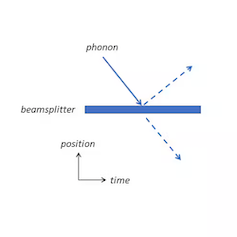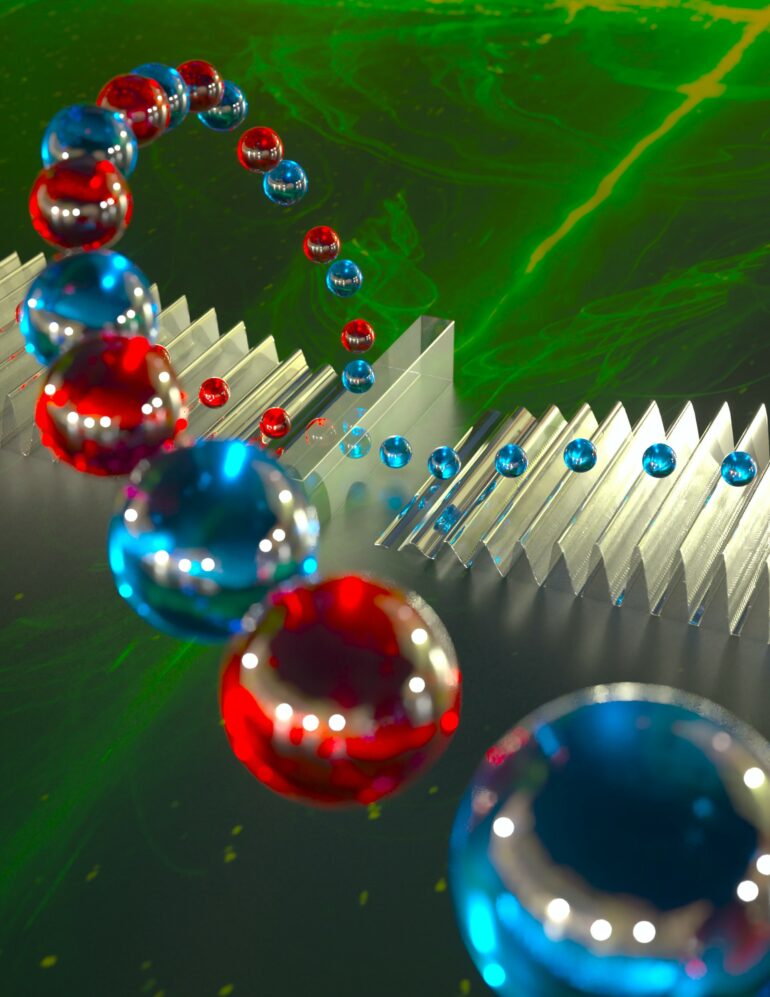When you turn on a lamp to brighten a room, you are experiencing light energy transmitted as photons, which are small, discrete quantum packets of energy. These photons must obey the sometimes strange laws of quantum mechanics, which, for instance, dictate that photons are indivisible, but at the same time, allow a photon to be in two places at once.
Similar to the photons that make up beams of light, indivisible quantum particles called phonons make up a beam of sound. These particles emerge from the collective motion of quadrillions of atoms, much as a “stadium wave” in a sports arena is due to the motion of thousands of individual fans. When you listen to a song, you’re hearing a stream of these very small quantum particles.
Originally conceived to explain the heat capacities of solids, phonons are predicted to obey the same rules of quantum mechanics as photons. The technology to generate and detect individual phonons has, however, lagged behind that for photons.
That technology is only now being developed, in part by my research group at the Pritzker School of Molecular Engineering at the University of Chicago. We are exploring the fundamental quantum properties of sound by splitting phonons in half and entangling them together.
My group’s fundamental research on phonons may one day allow researchers to build a new type of quantum computer, called a mechanical quantum computer.
Splitting sound with ‘bad’ mirrors
To explore the quantum properties of phonons, our team uses acoustic mirrors, which can direct beams of sound. Our latest experiments, published in a recent issue of Science, however, involve “bad” mirrors, called beam splitters, that reflect about half the sound sent toward them and let the other half through. Our team decided to explore what happens when we direct a phonon at a beam splitter.

A beam splitter for phonons – the phonon enters a superposition state where it is both reflected and transmitted until it is detected.
A.N. Cleland
As a phonon is indivisible; it cannot be split. Instead, after interacting with the beam splitter, the phonon ends up in what is called a “superposition state.” In this state the phonon is, somewhat paradoxically, both reflected and transmitted, and you’re equally likely to detect the phonon in either state. If you intervene and detect the phonon, half the time you will measure that it was reflected and half the time that it was transmitted; in a sense, the state is selected at random by the detector. Absent the detection process, the phonon will remain in the superposition state of being both transmitted and reflected.
A brief Ted-Ed explainer on superposition, which happens when particles can exist in multiple places at once.
This superposition effect was observed many years ago with photons. Our results indicate that phonons have the same…



